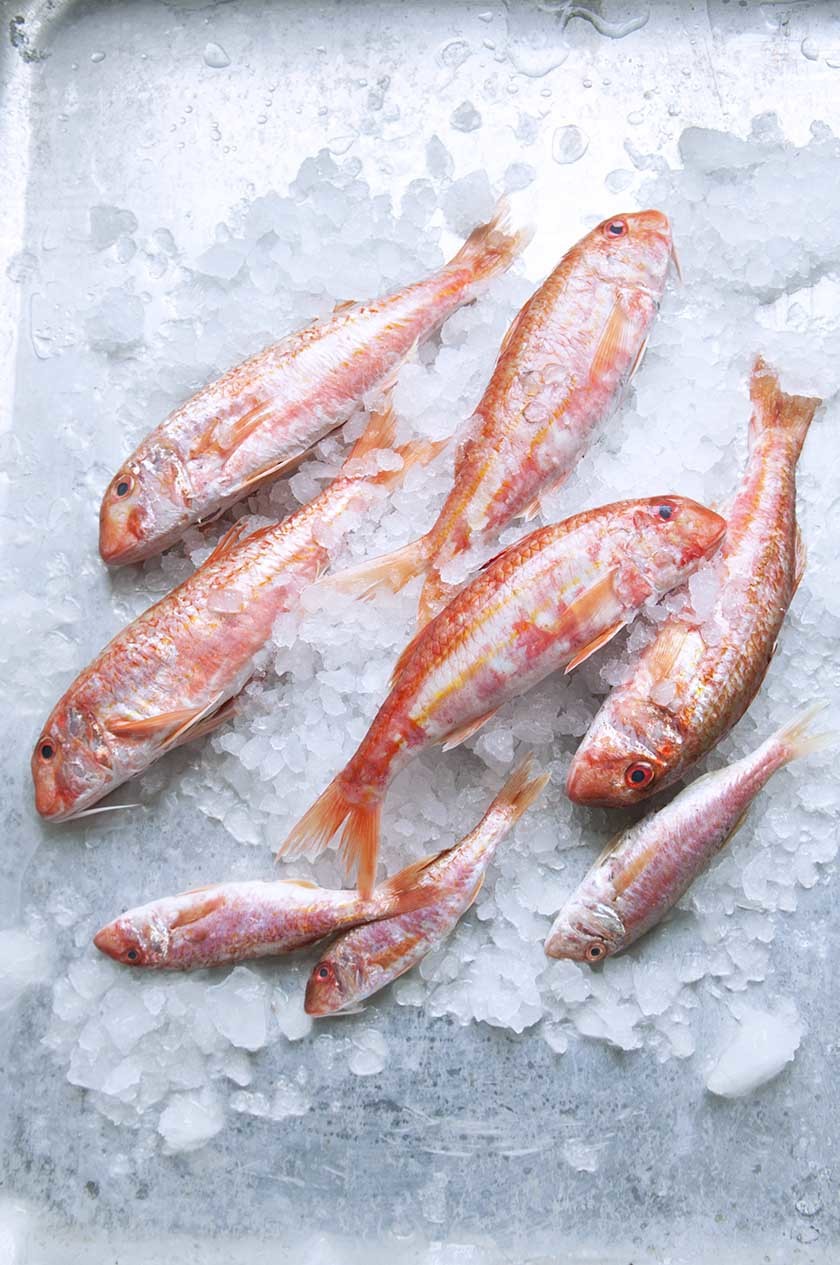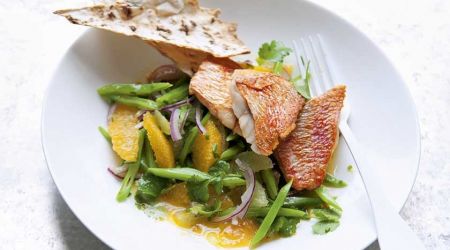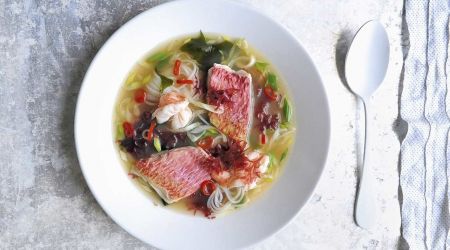Red mullet -
Warmer seas have enticed this pretty and sweet-tasting fish from the Mediterranean into UK waters. Clarissa Hyman reveals its colourful story
The question is, which came first: the fish or the haircut? Think Paul McCartney, early David Bowie, Billy Ray Cyrus and Rod Stewart. Or maybe not. Why was the Seventies- and Eighties- style coiffure – short at the front and sides and long at the back – called a mullet? Surely it can’t be because it looks like you have a dead fish on your head? If so, it’s an insult to a fine fish – which doesn’t even wear flares or shiny tracksuits – to conflate it with a much-ridiculed haircut. Still, I suppose it sounds better than having a hairstyle called haddock.
There are two species of red mullet found in European waters but the one most likely to be sold in British fishmongers is the pretty Mullus surmuletus, also known as the surmullet. It likes to hang out near rocks and is particularly fond of tiny crustaceans, which add to its special sweet flavour. Its skin is an iridescent mix of orange, red-gold and rose pink, and among its most distinctive features is the narrow yellow band that runs the length of its body with a stripe on the first dorsal fin. Why am I thinking Rod Stewart again?
The Mullus barbatus variety, mostly found in the Mediterranean, has a real rock’n’roll vibe: the lovely mottled skin changes pattern at night. The later it is caught, the blotchier it is – a curious but little-known fact. Its colours also evolve as the water temperature increases. The Romans were particularly fascinated by this, though perhaps not always in a compassionate way. One classical aesthete allegedly slow-boiled a red mullet in a glass bowl so he could marvel at the miraculous changes in its colour as it died.
In ancient Rome, they were reared in ponds where they were attended to and fussed over by their owners, and would be summoned at feeding time at the sound of the voice or bell of the keeper. Gourmets would pay extraordinarily high prices for a mullet and they were sometimes sold for their weight in silver. As such, large fish were preferred and regarded as status symbols or signs of affluence, confirmed by Roman poet Martial, who wrote: ‘Do not dishonour your gold serving-dish by a small mullet: none less than two pounds is worthy of it.’ So very Rod Stewart.
There are two warm-water species of mullet that are sometimes sold as red mullet: the West African goatfish, found along the Atlantic coast from Morocco to Angola, and the yellowfin goatfish from the Indian Ocean, but neither rival the Europeans for taste or looks. Sadly, the Mediterranean red mullet is much reduced in numbers as it has been subject to high fishing pressure, but Mullus surmuletus, from waters around the UK, especially the English Channel, offers the best choice for ethical eating.
The Cornish Inshore Fisheries and Conservation Authority currently offers the only management measure for this species, but consumers are advised by the MSC Good Fish Guide to avoid eating immature fish (less than 16cm) and fresh (not previously frozen) ones caught by day boats during the summer spawning season (May-July). It’s a relatively fast-growing species, maturing at two years old, with a sloping head, wide mouth and twin barbels (sensory organs) with which it detects food and sifts it from the seabed.
Once you find your fish it’s a delight, despite it looking like a ‘stretched goldfish’, according to the late food writer and piscine expert William Black. Its high fat content adds richness to the flavour and the liver is considered a delicacy, so it’s often sold and cooked ungutted, rather like a woodcock. Indeed they were once known as the woodcock of the sea.
Scaled and gutted, red mullet is perhaps best grilled but it can also be shallow-fried or baked. If grilling, slash the body on both sides diagonally down to the bone to help it cook more quickly and evenly. It partners particularly well with rosemary, so a sprig or two in the pan always works well. Other flavours it can happily pair with include chervil, tarragon and citrus.
Mark Hix keeps it simple by frying the pale-pink fillets in olive oil until they turn white and serving them with fresh samphire and a tomato vinaigrette. Rick Stein suggests grilling and serving with sauce vierge and toasted fennel seeds, or dressing fillets with parsley, garlic, tomatoes and chillies as a spaghettini sauce. José Pizarro describes a lovely recipe of red mullet – preferably Mediterranean surmullet – with potatoes and black olives that really brings out the sweet flavour of the flesh.
The red mullet is also a star of one of the last century’s most iconic fine-dining restaurant dishes, exemplifying the zeitgeist of the time and setting the course of cooking in a new direction. Red mullet with potato scales was created by legendary French chef Paul Bocuse at L’Auberge du Pont de Collonges in Lyon in the 1960s.
The ‘scales’ of his red mullet were made from slices of young potato brushed with egg yolk to form a single sturdy, crispy layer over the entire fillet. Bocuse was said to have been inspired by something he saw at a French food show: a dish of cold salmon topped with cucumber slices (a composition curiously familiar to many British buffet displays).
I shall resist the temptation to describe this as the Maggie May of all fish dishes, but I think the rocking red mullet might be heard humming, ‘Do ya think I’m sexy?’ Party on, Sir Mullus surmuletus.

Recipes
Get Premium access to all the latest content online
Subscribe and view full print editions online... Subscribe




